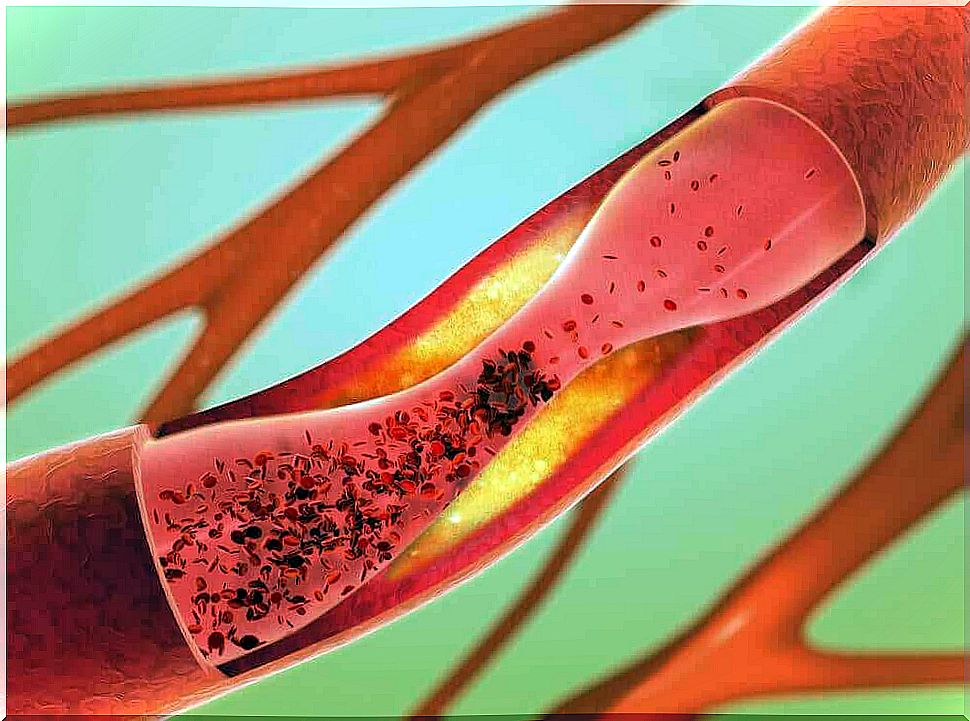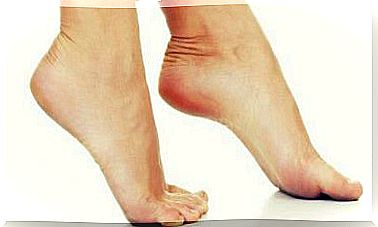Symptoms, Causes And Treatment Of Peripheral Artery Disease

Today we are going to talk about the symptoms, causes and treatment of peripheral artery disease. By definition, we refer to peripheral artery disease when the blood vessels of the body are narrowed. This means that they reduce the size of their inner passageway, reducing blood flow.
Think of blood vessels as blood transport tubes. These tubes have a certain caliber, that is, a certain internal passage that forms their diameter. If that diameter becomes smaller, then we are talking about peripheral artery disease.
To be more specific, we should clarify that the diagnosis of this condition occurs when the affected blood vessels are the large arteries of the human body that are not located in the heart, aortic system or brain. This disease mainly affects the arteries of the extremities.
Whether the origin is from atherosclerosis, thrombus formation or inflammatory processes, the result is always the same. The effect of arterial obstruction is the production of ischemia, that is, the lack of blood supply to any part of the body.
As for the spread of peripheral artery disease, we know that it affects about 12 percent of the population. The higher the age, the greater the prevalence, up to twenty percent in people over seventy.
Unfortunately, it can remain asymptomatic in most people who experience this disease. Up to 80 percent of those who suffer from it find out when it is too late and irreversible damage has already occurred. Both patients and doctors therefore need to know what it is and how to recognize it.
The causes of peripheral artery disease

The main and most common cause of peripheral artery disease is atherosclerosis. This is the formation of fatty plaques on the walls of the arteries, reducing their inner diameter, resulting in less blood flow.
The most common place for these plaques to appear is in the legs. When blood flow in the lower extremities decreases, symptoms characteristic of the disease develop, which we will mention later. Moreover, it evolves without treatment, the tissues can die due to lack of oxygen and nutrients.
Experts have identified risk factors that, if present in a person, increase the likelihood of developing atherosclerosis. These factors include:
- To smoke
- Aging
- Diabetes
- high cholesterol
- High bloodpressure
There is also a substance that has been associated with peripheral arterial disease by scientific studies (Spanish link): homocysteine. It is part of the proteins that participate in various metabolic processes.
Homocysteine can cause malfunctions in the function of the internal lining of the arteries, preventing it from protecting itself from circulating cholesterol. Because of this, it can increase the formation of fatty plaques and the risk of blood clots, which can also interrupt blood flow.
Symptoms

The classic sign of peripheral artery disease is intermittent claudication, something doctors have long described. This is the occurrence of pain when walking, located in the calf, that makes you have to stop walking. The pain disappears when you rest.
As the condition progresses, patients will experience pain not only when walking, but also at rest. This is a serious sign of disease progression. It can even appear at night, interrupting sleep and forcing patients to wake up. Other symptoms of the disease include:
- Heaviness in the legs: a feeling of fatigue in the muscles of the limbs.
- Weak pulse: mainly in the lower extremities.
- Wounds and skin ulcers: with a progressive appearance, but slow to heal.
- Changes in skin color: Legs may turn pale or blue.
- Cooling: For example, one leg is colder than the other.
- Poor growth of skin appendages: Toenails or leg hairs can become brittle and grow more slowly.
- Erectile Dysfunction: Men may have trouble getting or maintaining an erection.
Treatment of peripheral artery disease
There are three approaches to treating peripheral artery disease: lifestyle changes, medication, and surgery. In some cases, just changes in habits are enough. Other times, however, medication must be added to the treatment plan. In addition, severe cases may require surgery.
Lifestyle changes include quitting smoking if you are a smoker. This is the most important measure. Exercise and a varied and healthy diet are the ideal complement. For those who suffer from high blood pressure or diabetes, the recommendations for those diseases apply.
As for drugs, the treating professional can prescribe the patient drugs that prevent the formation of blood clots, such as aspirin. Cilostazol and pentoxifylline are also used, the function of which is to improve blood flow, especially when the symptom of intermittent claudication already exists.
Finally, the last option is surgery. It is reserved for severe cases and consists of three techniques that the professional will choose based on the clinical picture:
- Angioplasty: In this case, a catheter is inserted up to the affected artery to inflate a balloon that reopens the blocked area.
- Bypass: A graft is used with a blood vessel from another part of the body or with artificial tissue so that the blood can bypass the blockage with some kind of bridge.
- Thrombolytic drugs: Here, a drug is injected directly into the artery to dissolve clots.
Conclusion
Peripheral artery disease occurs when the body’s blood vessels become narrowed due to the formation of fatty plaques on the artery walls. Although asymptomatic at first, it can cause serious health complications over time. For this reason , it is important to get a diagnosis and treatment quickly.









